Piedmont Vegetation Spotlight: Tuliptree – Beech – Maple Forest
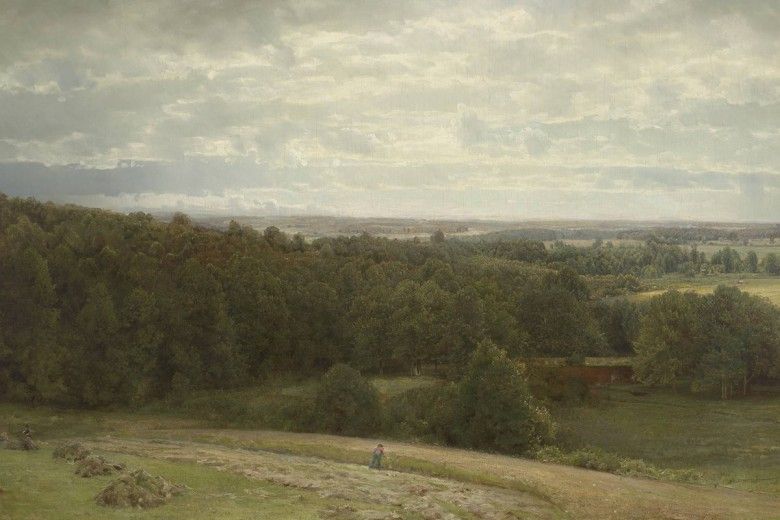
In the Piedmont region of the Eastern United States, forests have faced immense pressure, particularly in southeastern Pennsylvania. To that end, there has never been a better time to think about long-term, sustainable forest management. To do so, we must first understand what the forests of the Piedmont region looked like prior to European settlement and what they look like now to appropriately steward them into the future. In a new series of blogs over the coming year, we will highlight examples of the vegetative communities of the Piedmont and explain their history, composition, threats and opportunities for enhancement.
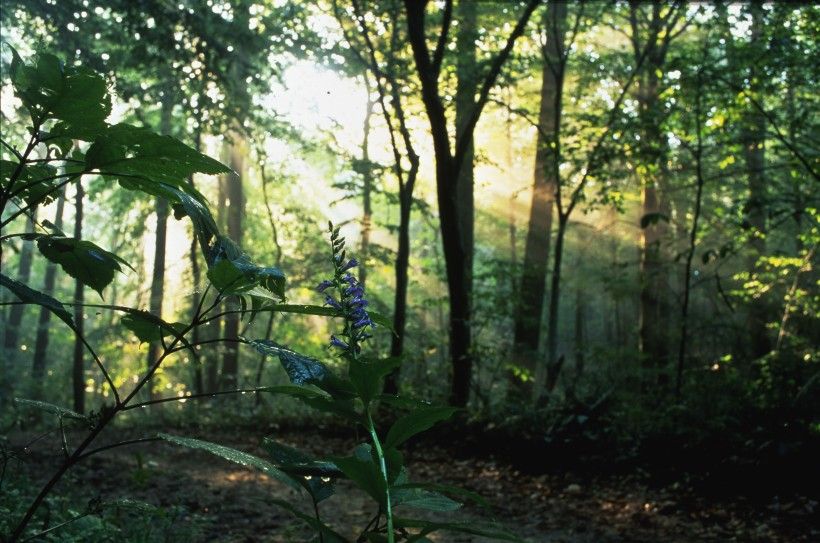
A Bit of Background . . .
When European settlers first arrived on the shores of what is now Pennsylvania and Delaware four centuries ago, a vast, seemingly unending sea of forest met them. Assuming the demands of a colonial population would never exceed this reserve of timber, and ignorant to the centuries of intentional management practiced by Native Americans in the region, colonials embarked on a campaign of land conversion to settle the frontier.
At sites like Hopewell Furnace, woodlots were almost entirely deforested, sometimes more than once, to produce charcoal, timber and tannins for a burgeoning American economy. Exploitative logging continued through the 19th and early 20th centuries, and in the early 1900s, Pennsylvania experienced a particularly intensive logging wave that left parts of the state entirely deforested with no regard for soil and water quality or reforestation. The Pennsylvania Bureau of Forestry simultaneously suppressed wildfires, which resulted in infrequent but catastrophic blowup fires of greater intensity than those historically used by Native Americans.
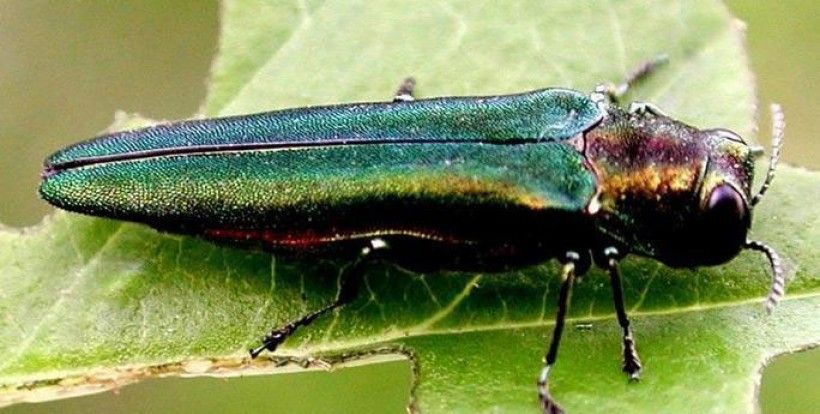
Exotic forest insects, pathogens and invasives also dramatically altered the composition of Eastern forests and continue to do so. Insects such as Emerald Ash Borer, which has recently killed or infested nearly all ash trees in eastern North America, have had a devastating effect. Pathogens like chestnut blight, an introduced fungus that killed all American chestnuts (Castanea dentata) in the early 20th century, similarly obliterate entire species. Lastly, imported invasive plants like multiflora rose (Rosa multiflora) outcompete analogous native species which hinders regrowth of native plants, and deer herbivory due to an ahistorical abundance of deer means that successful native regrowth gets eaten before maturity. In addition to the historical and biotic challenges to Eastern forests, development pressure continues to decrease forest connectivity and ownership size while climate change forces us to rethink our previous assumptions about how to manage forests.
History and Composition of the Tuliptree – Beech – Maple Forest Community
Community classifications of the Piedmont are defined by the Pennsylvania Natural Heritage Program’s (PNHP) Terrestrial & Palustrine Plant Communities of Pennsylvania, a manual used by organizations and agencies like the PA DCNR to inform management decisions. In this first spotlight, we'll discuss the “Tuliptree – Beech – Maple Forest" vegetative community. This community grows on a range of sites, making it common across the Mid-Atlantic and especially here in the Piedmont. Tuliptree – Beech – Maple forests grow on neutral to slightly acidic soils composed of silty clay loam, fine sandy loam, or silty loam (nutrient-rich to slightly nutrient-poor soils). These soils are mesic to wet-mesic, and the community’s positioning at low- or mid-slope elevations moderates temperatures.
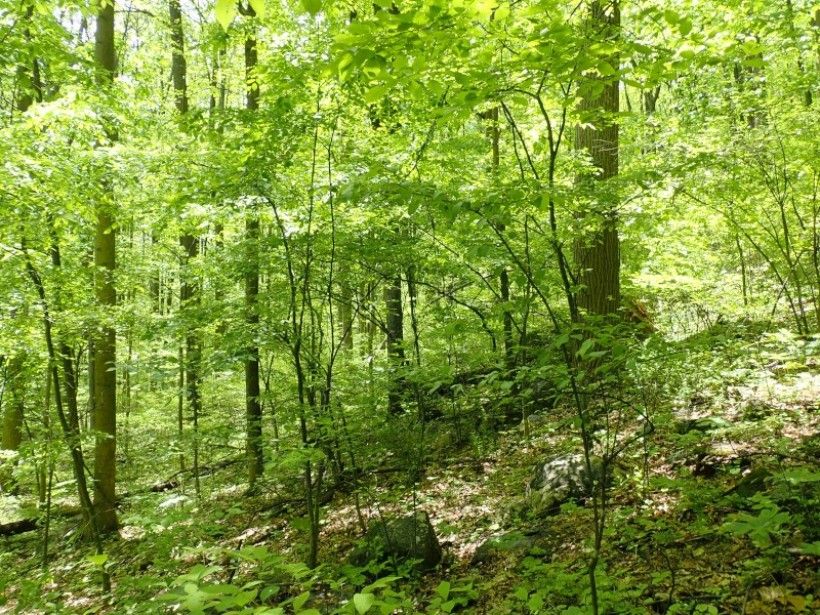
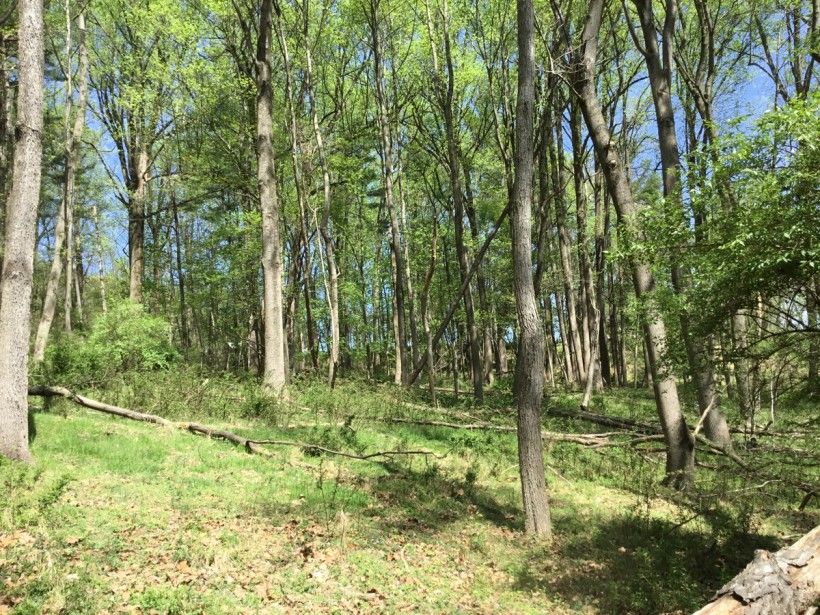
Historically, tuliptree (Liriodendron tulipifera), red maple (Acer rubrum), sugar maple (Acer saccharum) and American beech (Fagus americana) dominated the forest overstory, while red oak (Quercus rubra), blackgum (Nyssa sylvatica), hickories (Carya spp.), sweet birch (Betula lenta), eastern hemlock (Tsuga canadensis) and white ash (Fraxinus americana) could also be found interspersed in the tree canopy. In the forest midstory, this community had a mix of musclewood/hornbeam (Carpinus caroliniana), flowering dogwood (Cornus florida), ironwood/hop-hornbeam (Ostrya virginiana), witch hazel (Hamamelis virginiana), spicebush (Lindera benzoins) and various viburnums (Viburnum spp.). Finally, may-apple (Podophyllum peltatum), bloodroot (Sanguinaria canadensis), rattlesnake fern (Botrychium virginianum), dutchman’s-breeches (Dicentra cucullaria), squirrel corn (Dicentra canadensis), wild leek/ramps (Allium tricoccum) and spring beauty (Claytonia virginica) grew in the understory herbaceous layer of the forest.
Threats to this Community
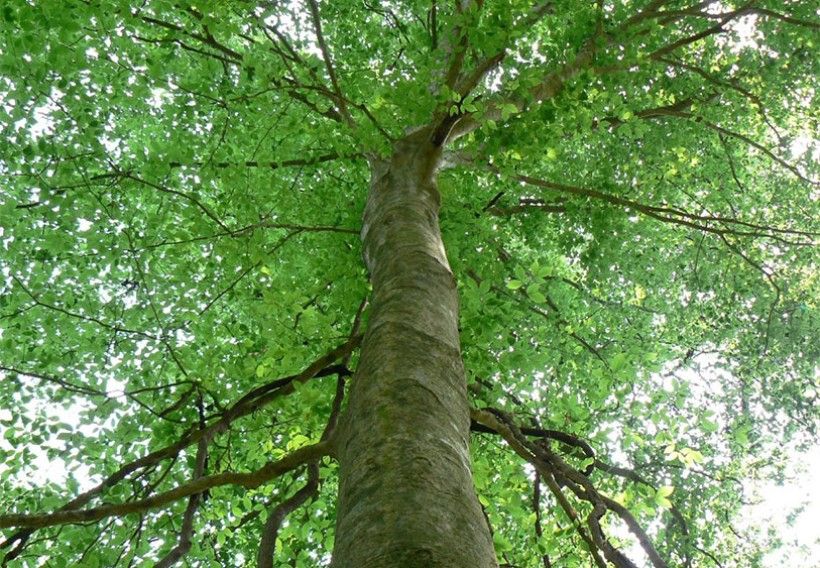
The natural disturbances that drove development of this community would have been storm damage, resulting in frequent single-tree or small-group mortality and infrequent large-group mortality, and low-intensity wildfires, resulting in selection towards fire-adapted species.
Today, these communities retain aspects of their historic composition, such as dominant overstory species, but have been significantly altered. While tuliptree, red maple and beech continue to dominate the canopies of these forests, associate species diversity has decreased. Sugar maple and eastern hemlock, two species that are highly shade tolerant and economically desirable, have been overharvested through “high grading”—an unsustainable logging practice in which only economically valuable trees are harvested, resulting in lower residual diversity and future production.
Climate change also threatens these species in addition to sweet birch as the Piedmont sits on the edge of their habitable growing zone. Eastern hemlock, American beech, oaks and white ash have all been threatened or extirpated by novel pathogens and pests such as hemlock woolly adelgid, beech bark disease, bacterial leaf scorch and emerald ash borer. Decades of fire suppression have allowed fire intolerant species to dominate these communities and forest canopies to close, preventing regeneration of oaks.
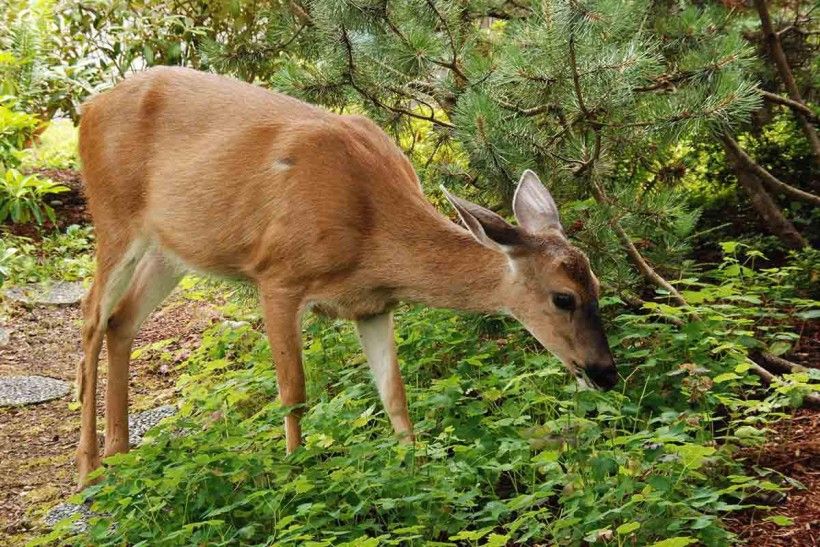
Beyond species-specific issues, indiscriminate threats to all vegetative communities in our region impact Tuliptree – Beech – Maple forests as well. Invasive plants such as garlic mustard, autumn olive and multiflora rose outcompete natives, saturate ecological niches, and prevent natural regeneration of trees. Indeed, due to the history of intense logging in Tuliptree – Beech – Maple forests and their mesic, nutrient-rich soils, these communities tend to be among the most heavily invaded.
Finally, deer browse eliminates most seedlings and herbaceous plants that do manage to establish. PNHP describes the Tuliptree – Beech – Maple forest as it ought to be, but today, in the Piedmont, the majority of these degraded communities have a tuliptree-red maple-beech overstory, some spicebush and a lot of honeysuckle or olive in the midstory, and an understory of stiltgrass, Japanese barberry, or multiflora with infrequent native herbaceous species and tuliptree seedlings or beech root sprouts.
Opportunities for Enhancement
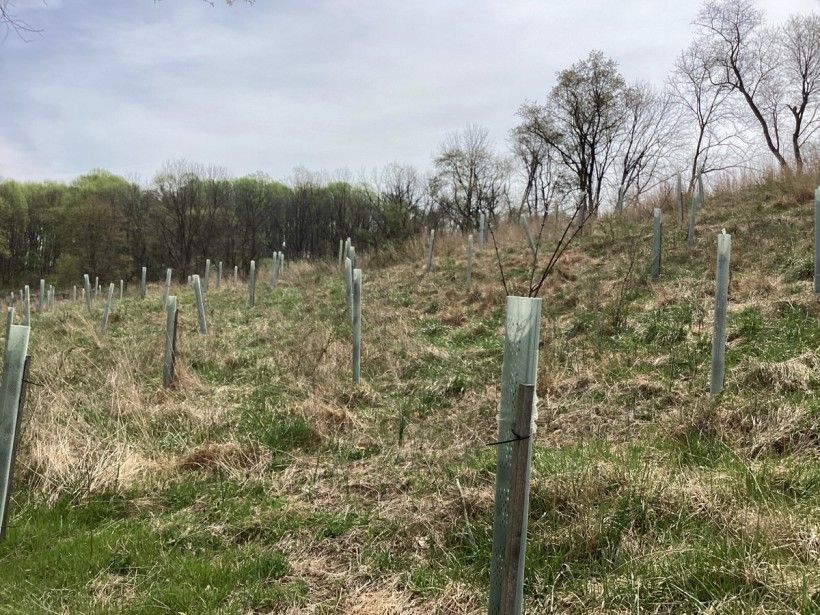
As environmental stewards who wish to see healthy, self-perpetuating ecosystems, we certainly have our work cut out for us in restoring this vegetative community. The good news is that we have a variety of management options for a variety of scales.
Broadly, the three threats that you, as a steward, can focus on are: 1.) invasive species, 2.) deer herbivory and 3.) species diversity. At the macro scale, in contiguous forest stands, the first step in management should be site analysis. What species compose your overstory? What percentage of total trees does each species represent? Where is your forest located, topographically? Is the soil generally wet or dry? If your answers to these questions loosely align with the metrics for Tuliptree – Beech – Maple forests, you have an idea of how your forest ought to look.
The next question is, how does your forest differ from the baseline? Each site is unique, but do you lack native shrubs or saplings? Does your forest lack an understory of native herbaceous plants and seedlings? Does your forest seem particularly thin or crowded? When you have identified the differences, think about what might cause them. Do you see a lot of deer on your property? Which forest layers have invasives and what niches might the invasives occupy? Do you have species susceptible to pests or pathogens present in the region? Do you know of past unsustainable logging on the property?
Once you have identified the problems, you can move forward to management planning. Consulting foresters can write detailed forest management plans that prescribe specific actions to take over time. They can also oversee any timber harvesting, if appropriate, to ensure that your property is respected, or organize a prescribed burn. Funds from harvesting can be reinvested into invasive species control, tree planting and deer fencing. You can also reference the Brandywine Conservancy's past Invasive Species Spotlights if you want to tackle invasive management yourself.
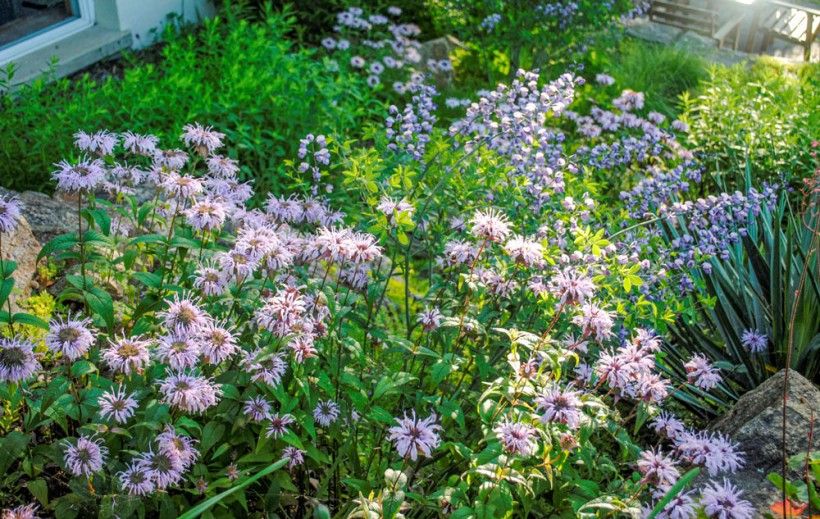
Site analysis at the micro scale, such as a backyard or garden, is more complex. If you have native trees in your yard or a nearby pocket of woods, they can offer clues to what might have once grown on your site. You can then mimic and enhance the appropriate community by planting additional natives. The Brandywine's Native Plant Pocket Garden Series provides some tips for creating successful small native gardens. In recreating Tuliptree – Beech – Maple forests, this could look like planting tuliptree and shagbark hickory saplings in a sunny spot in your yard or adding a witch hazel or dutchman’s-breeches to a flower bed.
The Tuliptree – Beech – Maple forest is just one of many communities found in our beautiful, diverse Piedmont region. We are lucky to have such a variety of soils, topography, waterways and microclimates, and even though our ecological communities are greatly degraded, they still linger, waiting for a patient and dedicated manager. We will continue to explore other communities of the Piedmont in future articles. In the meantime, start looking around and ask yourself, “What was this and how could I make it better?”
References:
Braund, J., E. Zimmerman, A. Hnatkovich, and J. McPherson. 2022. Pennsylvania Natural Heritage Program. Tuliptree – Beech – Maple Forest Factsheet. Available from: https://www.naturalheritage.state.pa.us/Community.aspx?=16065 Date Accessed: May 11, 2023
Nuttle, Tim; Royo, Alejandro A.; Adams, Mary Beth; Carson, Walter P. 2013. Historic disturbance regimes promote tree diversity only under low browsing regimes in eastern deciduous forest. Ecological Monographs. 83: 3-17.
Zimmerman, E., T. Davis, G. Podniesinski, M. Furedi, J. McPherson, S. Seymour, B. Eichelberger, N. Dewar, J. Wagner, and J. Fike (editors). 2012. Terrestrial and Palustrine Plant Communities of Pennsylvania, 2nd Edition. Pennsylvania Natural Heritage Program, Pennsylvania Department of Conservation and Natural Resources, Harrisburg, Pennsylvania.
Header Image:
William Trost Richards (1833 - 1905), The Valley of the Brandywine, Chester County (September), ca. 1886-1887, oil on canvas. Brandywine Museum of Art.